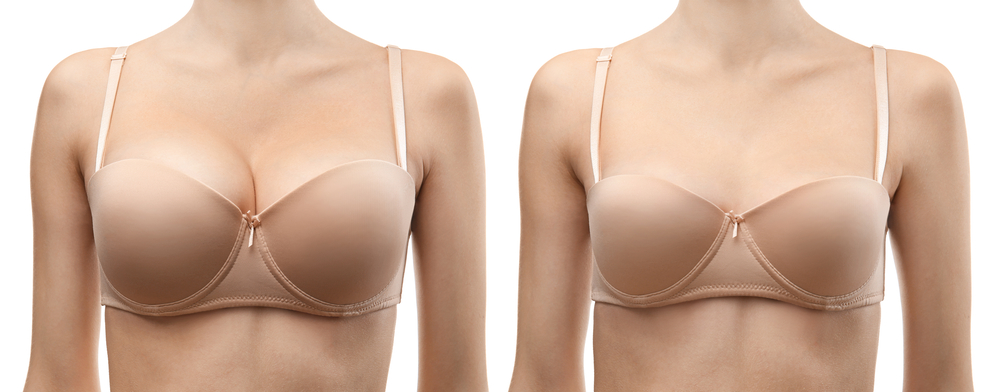Breast reduction for women with very large breasts can – literally – remove a weight off a woman’s chest. Being born with large breasts may be a blessing for some, for others it’s a curse that brings terrible neck, shoulder and back pain. Not to mention the curse of never finding clothes that suit or fit appropriately.
Breast reduction can be a magical procedure.
But finding a trustworthy and aesthetic plastic surgeon can be difficult. The good news is there are many reputable plastic surgeons operating in the UK that offer this life changing surgery, like Dr Darren Mceowen.
Source: Prague Aesthetic Clinic
But it is serious surgery and there still so many things to consider before you ever go under a scalpel.
Below are some of those myths and misconceptions as well all the information you should know if you’re considering a reduction.
1. What size qualifies for breast reduction?
A consultation with a plastic surgeon is the only true way to determine if a breast reduction is necessary.
BUT there are other things to think about, especially for insurance companies.
- Your Body Mass Index (BMI) – This pesky calculation from school P.E is one of the things your insurance will use to cover or deny the surgery. Breast sizes may decrease naturally with exercise and weight loss, so insurances will demand your BMI be between or below 30-35
- Weight of the removed breast tissue – Insurance companies may try to further penalize smaller statured women. They request to know the breast surface area (BSA) and the weight of the tissue your surgeon wants to remove. For larger women the removed weight may be near 1000 grams but for smaller women it may only be 350g.
- Symptoms and history – Some insurance companies will cover a breast reduction and file it under specific symptoms and discomfort. For example, back pain, skin irritations and nerve numbness. A letter of motivation from your general physician and care provider will also help. Your GP can explain a history of discomfort and testify the other efforts (weight loss, exercise, physio, etc) have not solved the issue.
2. How painful is a breast reduction?
It’s surgery – so it hurts. A lot.
The surgery itself takes between 3 and 5 hours and patients usually leave the hospital on the same day as the surgery.
In the following days, your breasts will hurt and feel uncomfortable. There will be bruising and swelling from the stretched breast tissue. Women say these initial days post-op are the most painful. Your doctor can prescribe pain medication and after a week the discomfort should be less. After a month, many feel almost fully recovered.
3. How much do breast reductions cost?
On average with patients getting aesthetic breast reductions, the surgery costs approxiametly £4,400 but there are other added costs:
- Anesthesia fees
- Hospital and operating fees
- Medical test charges
- Post-surgery garments
- Medical prescriptions
- Surgeon fee (consultations, post-op visits, etc)
Health insurance coverage will vary between companies, so follow up with your insurance provider for what fees will be excluded.
4. What are the side effects of a breast reduction?
Again, it’s surgery – there’s a lot of risk and side effects you may experience
- Anesthesia risks – resistance, sickness, etc
- Bleeding and blood clots
- Change in breast appearance – duh – but this includes asymmetry, shape irregularity and scarring
- Decreased nipple sensation (temporary or permanent)
- Excessive firmness of the breasts
- Infection
- Potential inability to breast feed – changes in the breasts during pregnancy can change the breast reduction size
There are many more risks to consider, for more click here or ask your plastic surgeon
5. What happens after the surgery? What does recovery look like?
You’ll need to wear a surgical bra for about 6 weeks post-op. You can take it off for showers but should wear it day and night. Only after 3 months can you wear a regular bra with underwriting, otherwise bralettes and sport bras are recommended.
Sleeping may be a bit difficult to limit the pressure around the breasts. You’ll need to
- Keep the torso elevated
- Put a pillow or cushion on your sides
- Put a pillow under your knees
You’ll need to avoid driving until you’re off the prescribed pain medications. Wearing a seatbelt and the motions of driving may also pull and push on the healing wounds.
Many take time off from work to properly recover and rest (10-14 days). This isn’t possible for everyone but reduced activity for the first couple of weeks will be mandatory.
You shouldn’t smoke for 2-3 weeks before the surgery and for 3-4 weeks afterwards.
There are plenty of other daily changes, for more on what to expect click here.

